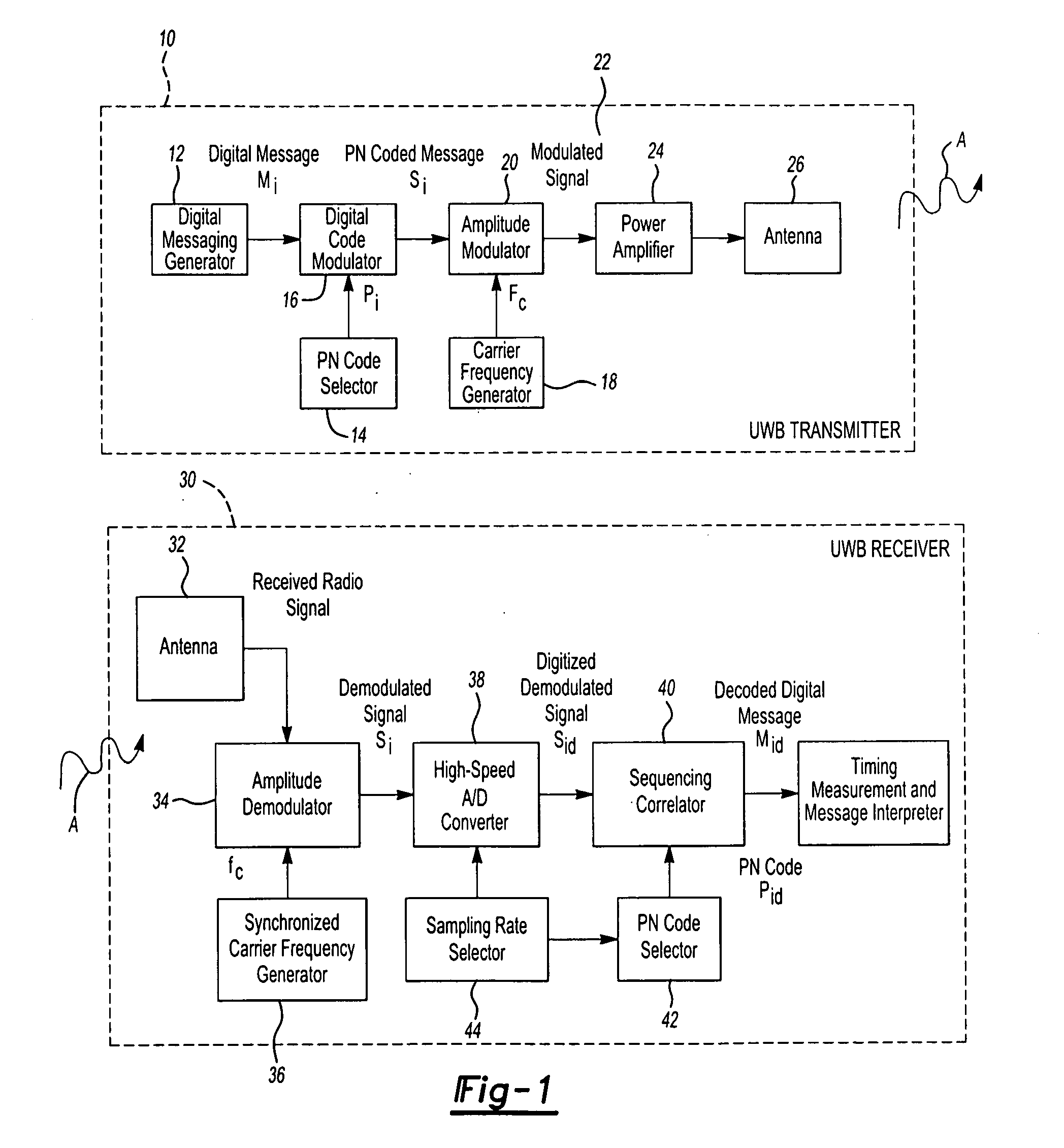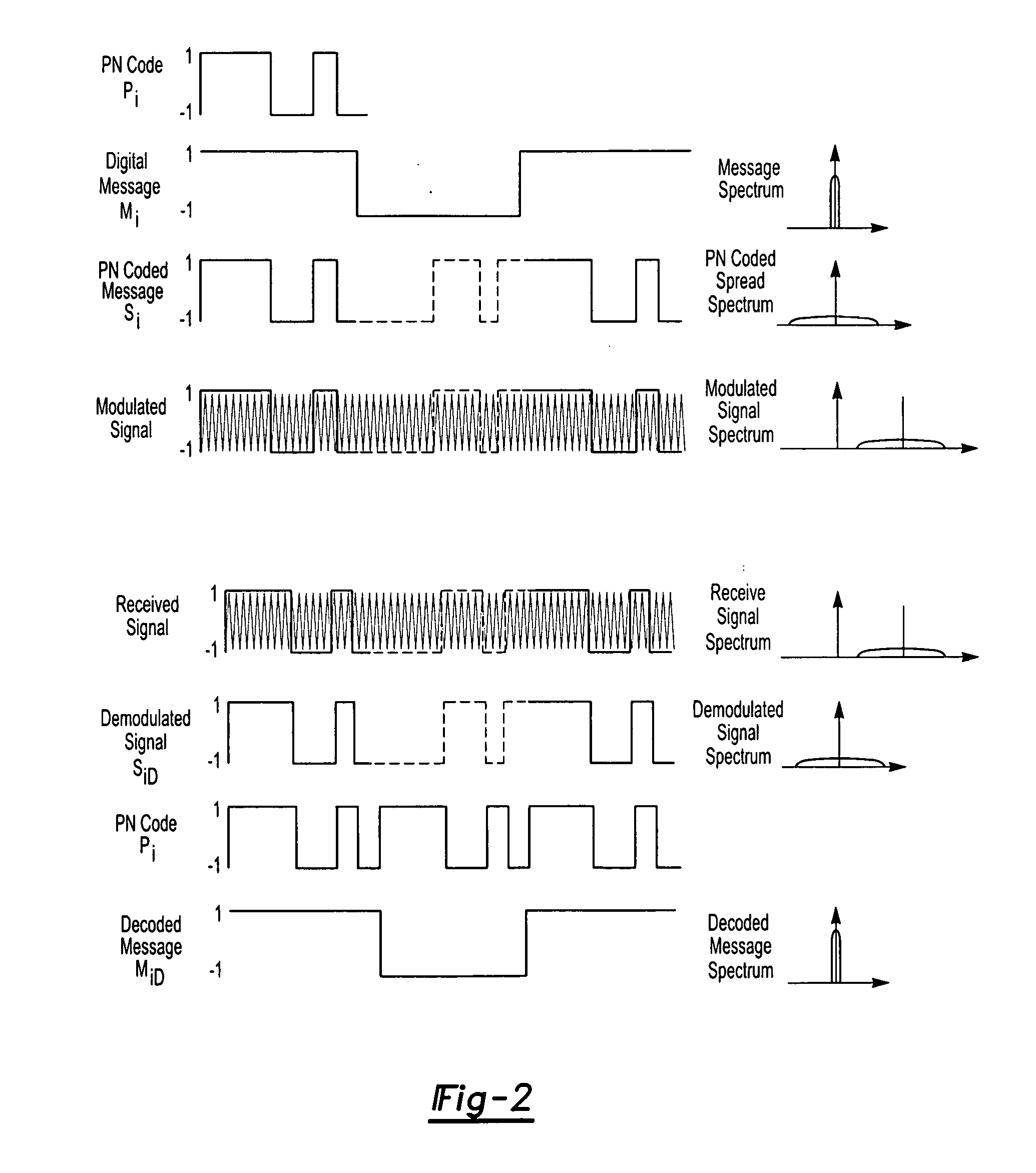Navigation system
a navigation system and receiver technology, applied in the field of navigation systems, can solve the problems of weak signals, high cost of making and operating, and high cost of atomic clocks, and achieve the effects of high penetration property, high accuracy in determining the location, and fast update rate of location calculations
- Summary
- Abstract
- Description
- Claims
- Application Information
AI Technical Summary
Benefits of technology
Problems solved by technology
Method used
Image
Examples
Embodiment Construction
[0028] The method of the present invention includes initializing a network of at least three base stations to determine their relative location to each other in a coordinate system; measuring, at the target, the time of arrival of at least one signal from each of three base stations, and then calculating the location of the target on the coordinate system can be calculated directly.
[0029] The initializing step utilizes at least three base stations and preferably at least four base stations. The base stations are transceivers that are capable of both receiving and transmitting signals. One of the base stations may be designated as the master station, as necessary. The master designation is arbitrary and may be shuttled amongst the base stations. In a preferred embodiment, the master designation resides on a single base station until that base station becomes deactivated (e.g. the base stations is powered down, loses communication with or travels out of range of the other base statio...
PUM
 Login to View More
Login to View More Abstract
Description
Claims
Application Information
 Login to View More
Login to View More - R&D
- Intellectual Property
- Life Sciences
- Materials
- Tech Scout
- Unparalleled Data Quality
- Higher Quality Content
- 60% Fewer Hallucinations
Browse by: Latest US Patents, China's latest patents, Technical Efficacy Thesaurus, Application Domain, Technology Topic, Popular Technical Reports.
© 2025 PatSnap. All rights reserved.Legal|Privacy policy|Modern Slavery Act Transparency Statement|Sitemap|About US| Contact US: help@patsnap.com



